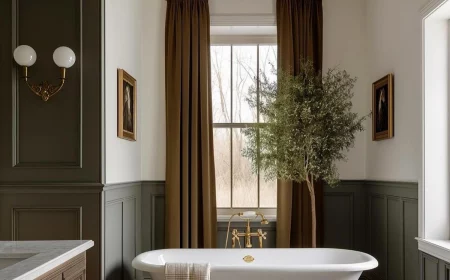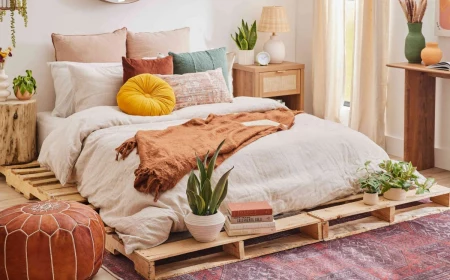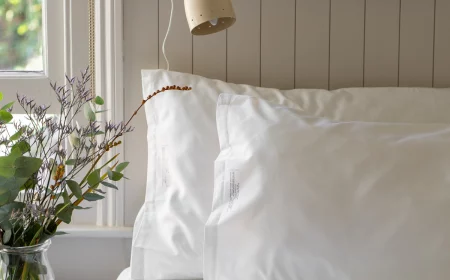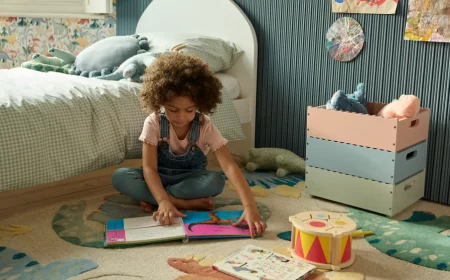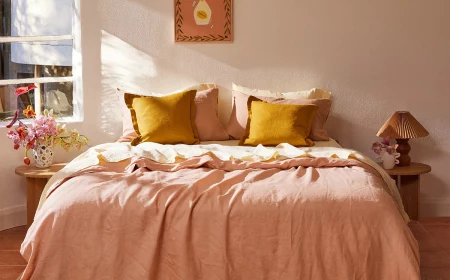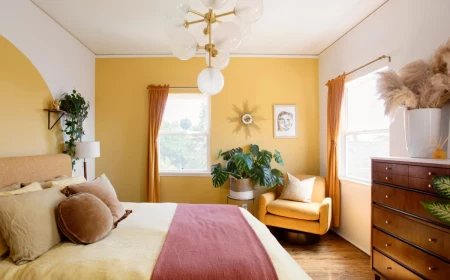Your Bedroom Doesn’t Need a Huge Budget—It Just Needs a Smart Plan
I’ve walked into more bedrooms than I can count. Some had budgets that could rival a new car, while others were in first-time apartments where every single dollar was accounted for. And I can tell you, the secret to a great bedroom has almost nothing to do with the money you throw at it. It’s all about the thought you put in.
In this article
A beautiful, truly restful space comes from making smart choices, not from flipping through a catalog and buying a matched set. So many people feel stuck because they see high-end furniture and assume a comfortable, stylish room is out of reach. That’s just not true. Honestly, the most satisfying projects are often the ones with the tightest limits because they force you to get creative and focus on what really matters: how the room works, how it feels, and whether it reflects you.
This isn’t about cheap hacks that fall apart in six months. This is a real method for building a bedroom that feels layered, personal, and complete. Forget the idea of a total makeover in one weekend. The best spaces are built with care over time. Let’s get started.
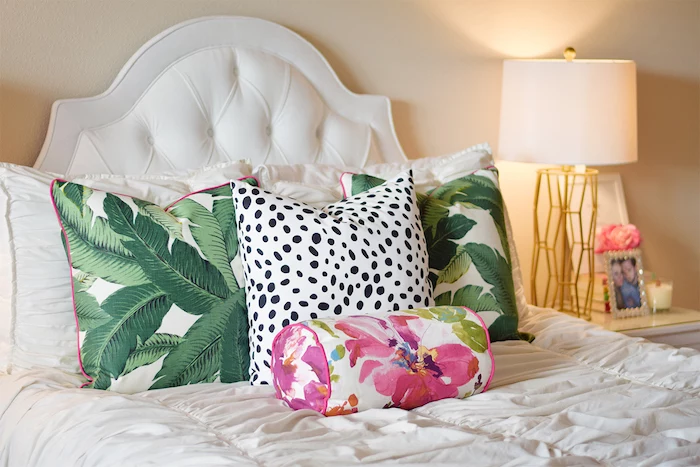
First Things First: The Foundation
Before you even think about buying a single pillow, we have to prep the room. I know, I know—this is the part everyone wants to skip. But it’s also the most important. A solid foundation makes every other choice you make easier and look a hundred times better.
The Ruthless (But Necessary) Edit
You simply cannot decorate clutter. The very first step on any job is to clear the space and get honest about what’s in it. That means the pile of clothes on the chair, the stacks of old magazines, and the random gadgets collecting dust have to go. A bedroom’s main job is to help you rest, and a cluttered room leads to a cluttered mind. If something doesn’t serve a real purpose or bring you joy, it doesn’t belong in your sanctuary.
Once the room is clear, you can finally see what you’re working with. Look at the flow. Can you walk easily from the door to the bed and to the closet? That path is a “traffic lane,” and it should be at least 30 inches wide. If your furniture is blocking it, the room will always feel cramped. Sometimes, just rotating a bed 90 degrees can open up the entire space. Sketch it out on paper before you start moving heavy stuff!
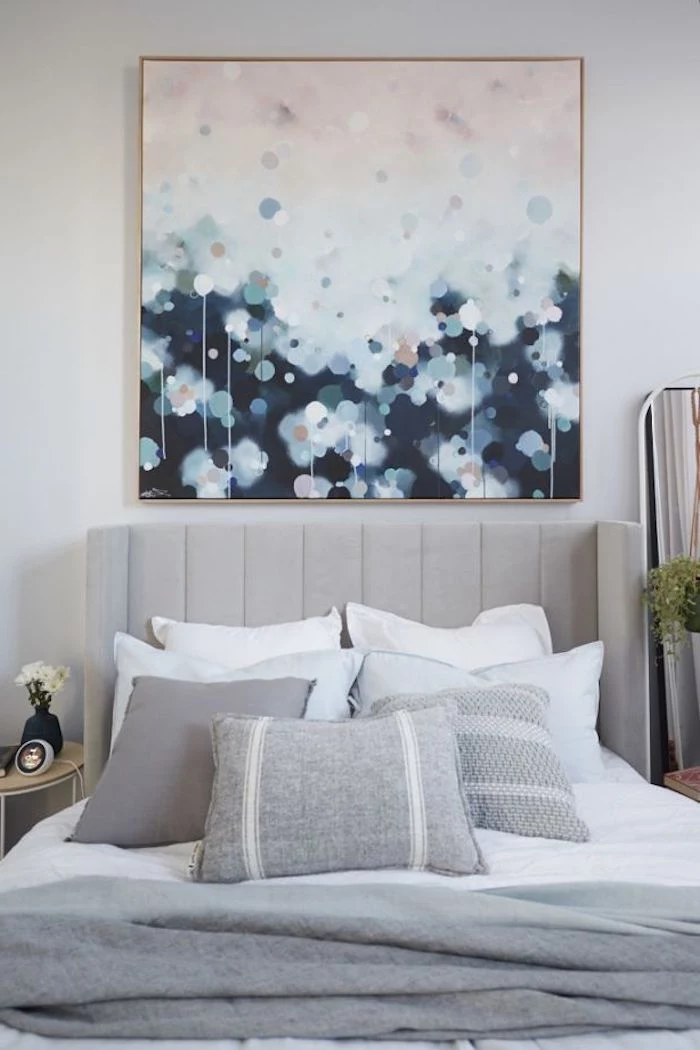
Oh, and a quick tip from a mistake I’ve seen happen more than once: before you buy any new (or thrifted) furniture, measure it! And then measure your doorways, hallways, and stairwells. I once had a client who found a gorgeous antique dresser, only to discover it wouldn’t fit up the stairs. It’s still sitting in their garage. A tape measure is your best friend.
The Power of Paint: Your Best Investment
Paint is, without a doubt, the most powerful tool in design. It’s also where people make the biggest mistake to save a few bucks. Buying cheap paint is a classic false economy—it takes more coats to cover, scuffs if you just look at it wrong, and the color is never quite right.
Look, the good stuff from brands like Benjamin Moore or Sherwin-Williams will run you between $50 and $80 a gallon. I know that sounds steep compared to the $25 budget cans, but you’ll use less of it and the finish will last for years. It’s the best money you can possibly spend on a room transformation.
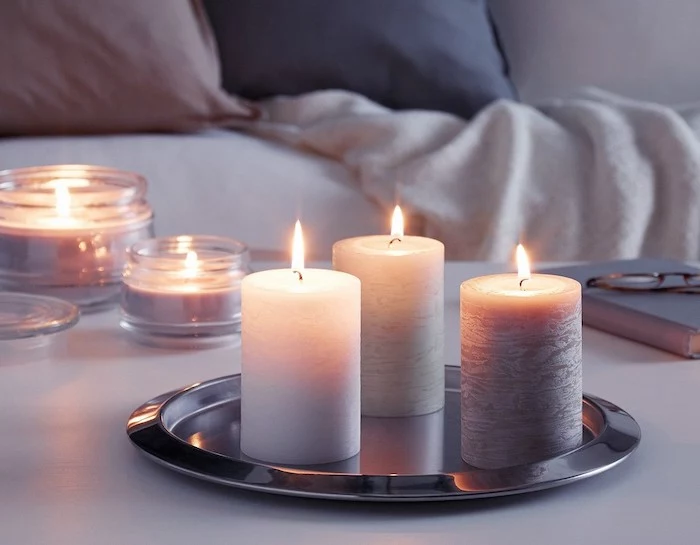
The finish, or sheen, you choose is just as important as the color. Here’s a quick rundown:
- Matte/Flat: This finish has zero shine and is amazing at hiding imperfections on older walls. It looks velvety and rich. The downside? It’s not very durable. I mainly use it on ceilings or in very low-traffic adult bedrooms.
- Eggshell: This is the go-to for most bedroom walls. It has a tiny bit of luster (like an eggshell, go figure) and offers the perfect balance. It’s much more durable than matte and you can gently wipe it clean.
- Satin: A bit more sheen, and even easier to clean. This is great for trim, doors, or kids’ rooms. Just be aware that the shine can highlight dings and bumps, so your wall prep needs to be solid.
A great paint job is all about the process. Plan for a full weekend to do it right. Here’s a quick shopping list to get you started:
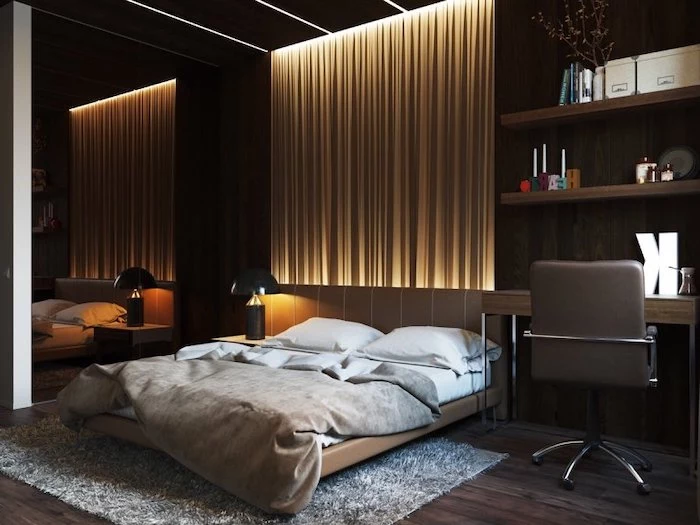
- 1 gallon of high-quality paint (in an Eggshell finish)
- 1 gallon of good primer (especially if you’re making a big color change)
- A 2.5-inch angled brush for cutting in
- A roller, roller frame, and paint tray
- Quality painter’s tape
- Spackle and a putty knife for filling holes
- A few drop cloths
Always do two thin coats. It’s so much better than one thick, drippy one. Let the first coat dry completely before starting the second—patience is key!
Layering for That High-End Feel
With a clean, freshly painted room, we can get to the fun part: adding the layers that create comfort and style. This is where you can be really smart with your budget by mixing affordable finds with a few key splurges. A room feels expensive when it has depth, and that comes from mixing textures and patterns.
Textiles: How to Make a Bed Look Incredible
Your bed is the star of the show, so let’s make it look inviting. Here’s a trade secret: spend your money on good pillow inserts and save on the covers. Cheap polyester inserts go flat and look sad in a matter of months. A good feather-and-down blend insert will last for years and always look plush.
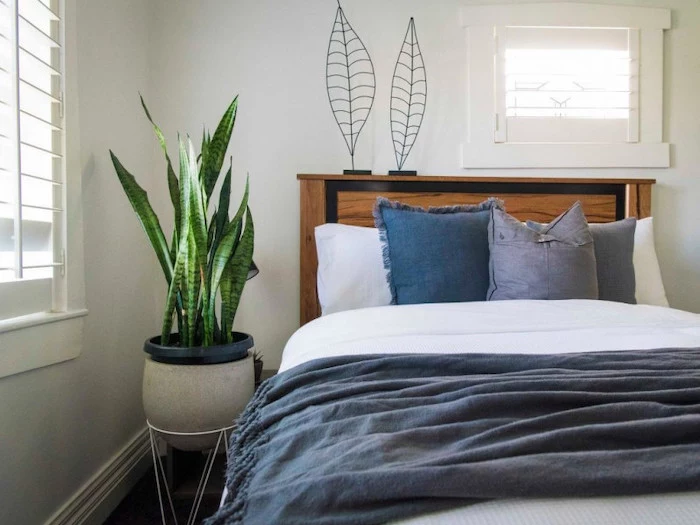
You can find fantastic inserts at places like Crate & Barrel or Pottery Barn for about $25-$40 an insert. Then, you can grab trendy, affordable covers for $15-$20 from places like H&M Home, IKEA, or Etsy and swap them out whenever you want. Nobody will know your secret!
Pro tip: Always buy inserts that are two inches larger than your covers. So for an 18×18-inch cover, get a 20×20-inch insert. This makes the pillow look professionally stuffed and full, not saggy.
Next, think texture. A bed with just a flat cotton comforter can look a little one-note. Add a chunky knit throw at the foot of the bed, or maybe a single velvet pillow to contrast with your linen or cotton shams. These little details add visual weight and make the whole setup feel more luxurious.
Artwork: Putting Your Story on the Walls
Bare walls feel temporary and impersonal. Art is what makes a space yours, and it doesn’t have to be expensive.
The most common mistake people make is hanging art way too high, making it feel disconnected from the furniture. Here’s the rule the pros use: the center of the artwork should be about 57 inches from the floor. This is the average human eye level. If you’re hanging it above a headboard or dresser, leave 6 to 8 inches of space between the furniture and the bottom of the frame.
Want to create a gallery wall? Grab some kraft paper and trace each frame. Cut out the paper templates and use painter’s tape to arrange them on your wall. You can move them around endlessly until you find a layout you love—no nail holes required. Once it’s perfect, just hammer the nail right through the paper.
By the way, think outside the box for art. You can frame beautiful scraps of wallpaper, high-quality wrapping paper, or even fabric remnants. Thrift stores and flea markets are gold mines for unique frames and forgotten art. A collection of mismatched frames can look incredibly chic if you paint them all the same color.
Heads up on safety: For anything heavy, like a big mirror or a large framed piece, please use proper hardware. A single nail won’t cut it. Use two D-rings on the frame and two corresponding, heavy-duty hooks on the wall. Always use a wall anchor in drywall. It’s a simple step that prevents a dangerous and costly accident.
Setting the Mood with Light and Life
Lighting can make or break a room. Good lighting makes a space feel warm and spacious; bad lighting can make even the best furniture look cheap. Every well-designed room should have three layers of light:
- Ambient Light: This is your general, overhead light, usually from a ceiling fixture.
- Task Light: This is focused light for an activity, like a reading lamp on your nightstand.
- Accent Light: This is soft, mood-setting light, like a small, low-wattage lamp on a dresser.
When buying bulbs, look for the Kelvin (K) number. For a bedroom, you want a warm, cozy glow. Stick to bulbs between 2700K and 3000K, often labeled “soft white” or “warm white.” Anything higher (like “daylight” bulbs) is too blue and clinical for a restful space.
A critical safety note: If you want to install a new ceiling fixture or hard-wired sconce, you must hire a licensed electrician. Swapping out a fixture can be a simple service call, often costing between $150 and $300. It’s not cheap, but it’s a lot cheaper than a mistake that could lead to a fire.
Finally, bring in some life with a plant or two! They add color, texture, and can even help purify the air. For bedrooms, which can be lower in light, I always recommend a Snake Plant, a ZZ Plant, or a Pothos. They’re all incredibly tough and forgiving. And if you have a black thumb? No shame! There are some amazingly realistic artificial plants out there these days.
Pulling It All Together: A Realistic Budget
So, what does this actually cost? You can make a massive transformation for less than you think. It’s all about where you choose to spend your money.
Here’s my go-to advice on where to splurge and where to save:
- Splurge Here: Your mattress (non-negotiable for good sleep!), quality paint, and good pillow inserts. These are foundational items that impact quality and longevity.
- Save Here: Pillow covers and decorative throws (change them with trends!), side tables (thrift stores are great for these), and art frames (a can of spray paint can unify mismatched finds).
A realistic budget for a major refresh could look something like this:
- Paint & Supplies: $150
- New Bedding Layers (Inserts, Covers, Throw): $200
- A Nice 8×10′ Area Rug (from a site like Rugs USA): $300
- Art & Thifted Frames: $100
- Total: Around $750 for a room that feels brand new.
Building a bedroom you truly love is a marathon, not a sprint. Start with a clean slate and a great coat of paint. Invest in the things you touch and use every day, like soft lighting and quality bedding. Then, slowly layer in textures and personal items that tell your story. A room that’s collected over time will always feel more authentic and more like you than one bought in a single afternoon.
Inspirational Gallery
How do I fill my walls when original art is out of my budget?
Think beyond traditional canvases. Frame a large piece of beautiful remnant fabric from a store like Spoonflower for a huge impact with minimal cost. Another powerful trick is to print your own high-resolution photos in black and white and have them mounted in oversized, affordable frames like the IKEA RIBBA series. For smaller pieces, browse sites like Society6 or Etsy for prints from up-and-coming artists—you can often get a stunning A4 print for the price of a few coffees. The key is to choose pieces that mean something to you, not just generic decor.
The most common decorating mistake in a bedroom? A rug that’s too small. It makes the entire space feel disjointed and cheap, like an afterthought.
As a rule of thumb, your rug should be large enough so that at least the front two-thirds of your bed and the front legs of your nightstands are sitting on it. This anchors the sleeping area and makes the entire room feel more expansive and intentionally designed. If a large rug is a budget-breaker, consider layering a smaller, more decorative rug over a simple, inexpensive natural fiber one like the LOHALS from IKEA.
- A rich, layered feeling that invites you to touch.
- A sense of visual depth without a single busy pattern.
- An effortlessly sophisticated and calming atmosphere.
The secret? A conscious mix of textures. Combine a crisp cotton percale sheet, a soft linen duvet cover, a chunky knit wool throw, and maybe a single velvet cushion. Contrast the smoothness of a metal lamp with the roughness of a ceramic vase. It’s this tactile variety that makes a room feel expensive and complete.
Matte Finish: Offers a velvety, modern look that beautifully diffuses light and hides minor wall imperfections. Its downside is that it’s less durable and harder to clean, making it better for low-traffic areas.
Eggshell Finish: Has a very subtle sheen, somewhere between matte and satin. It’s far more durable and wipeable than matte, making it a highly practical choice for most bedrooms.
For a perfect balance of aesthetic and durability, eggshell is almost always the expert’s choice for a bedroom sanctuary.
That unassuming, raw pine RAST dresser from IKEA for under $50 is a blank canvas for high-end style. Don’t be fooled by its simple look. With a coat of quality paint (try Benjamin Moore’s Advance for a durable, furniture-grade finish) and a set of unique handles from an Etsy seller or a high-end brand like Schoolhouse, you can create a piece that looks like it came from a designer boutique for a fraction of the price. This is where your creativity adds true value.
The one area to prioritize your budget: your bedding. While you can save on the frame or side tables, the materials that touch your skin every night are a worthwhile investment. You don’t need a thousand-thread-count, but investing in 100% long-staple cotton or linen sheets from a brand like Parachute or Quince will dramatically elevate your comfort and the overall feel of your bed. They get softer with every wash and will outlast cheaper polyester blends for years.
Forget expensive rewiring. Creating layered, ambient lighting is one of the easiest budget upgrades.
- Plug-in Sconces: Get the chic, hotel-style look of bedside sconces without calling an electrician. Brands like Color Cord Company offer stylish options you simply mount and plug in.
- Add a Dimmer: A simple plug-in dimmer switch for your main table or floor lamp costs less than $15 and gives you total control over the room’s mood.
- Vary the Height: Combine a low table lamp with a tall, arching floor lamp to draw the eye around the room and eliminate dark corners.
“Be faithful to your own taste because nothing you really like is ever out of style.”
The thrift store is your best friend for finding character. Instead of buying new, mass-produced items, keep an eye out for these treasures:
- Solid Wood Nightstands: Look for classic shapes with dovetail joints. Even if the finish is dated, a little sanding and paint can transform them.
- Unique Lamp Bases: Don’t worry about the shade or wiring. A new shade and a simple rewiring kit are inexpensive upgrades for a lamp with a unique ceramic or wood base.
- Ornate Picture Frames: Ignore the ugly art inside and focus on the frame itself. A coat of spray paint in matte black or gold can turn a dated frame into a chic home for your own photos or prints.
To achieve a cohesive look without overthinking, lean on the classic 60-30-10 color rule. Choose a calming neutral like a soft grey or warm white for 60% of the room (your walls). Select a secondary color, perhaps a muted blue or earthy green, for 30% of your items (duvet cover, curtains). Finally, pick a bold accent like mustard yellow or terracotta for the final 10% (throw pillows, a vase, books on the nightstand). This simple formula ensures balance and makes shopping for decor much easier.

